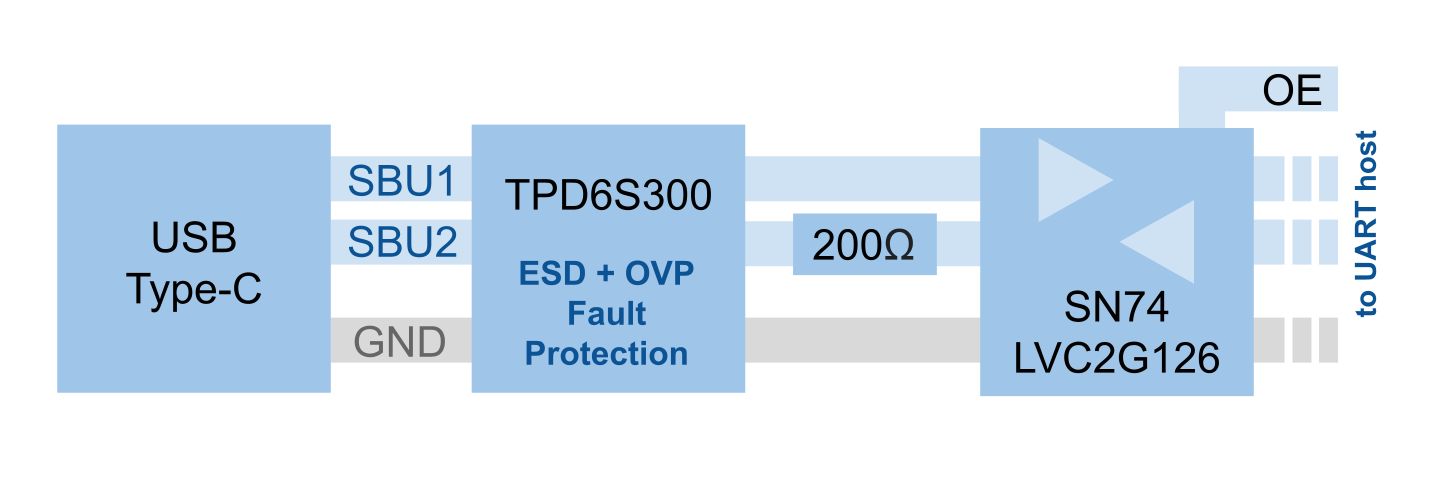Project update 3 of 5
Design & Testing Progress, Serial Over USB Type-C in the Wild, and a Design Example
by Dmitrii VotintcevOur campaign is a success!! Thank you for all the support. We will be shipping USB-Cereal in the coming months! In the meantime we have made good progress:
- Kicked off regulatory testing for regional compliance. This includes compliance with FCC's Part 15 requirements, EU EMC and RoHS Directives, and UKCA Directives.
- Made a few minor tweaks to the enclosure to prevent slight bowing of the top lid.
- Developed comprehensive testing procedures for each device.
The campaign progress is going well and in agreement with our schedule.
Serial Over USB Type-C In the Wild
USB-Cereal’s main goal is to provide a simple, hassle-free interface for serial communication with the device under development. Such an interface sounds like a good idea, and the industry tends to agree. In the field we have spotted a few known manufacturers who use the same or similar methods to pull logs from closed-case devices:
- Purism Librem 5 uses UART over USB Type-C in the same manner, and is USB-Cereal compatible.
- Several reports exist online about Google using UART over USB Type-C in some of their phones:
- Apple does something similar on (at least) their M1-based laptops, but their method is not compatible with USB-Cereal, and is listed here as an interesting UART + USB Type-C + PD-negotiation implementation idea. One thing I could relate to is their opening remark:
Having a serial console is indispensable for a fast development cycle and to debug low-level issues.
Couldn’t agree more! It is super useful to have UART readily available for various development and exploratory tasks.
Please let us know if your device uses UART on USB Type-C SBU pins—or if you know of any production devices that we might have missed—and we’ll feature it in future update!
Design Example
Some of the common design challenges around USB Type-C receptacles are related to the physical aspects of the port, especially considering the real-world use cases:
- Pins within the connector are physically located close together and are prone to get impacted by moisture and debris. This could result in temporary failures or permanent chip damage if proper mitigation strategies are not in place. In bad cases, such shorts can even cause severe mechanical damage and overheating.
- A plethora of cables and adapters exist that are not compliant with the USB specification. In some cases, they simply will not work, but in the worst cases, they can kill the device under development. Benson Leung of Google (and others) conducted extensive research about such cables and determined that they are far more common than we'd like to think.
- Shorts can even occur between adjacent pins if an unfortunate combination of plug, receptacle, and insertion- or retraction-angle conditions are met.
There are various white papers on the subject, including:
We invite you to have a look so you can make your USB Type-C designs as robust as possible. If such failure cases are not taken into account, they can cause regulatory hurdles or dysfunctional devices, either of which are likely to result in unwanted consequences for product manufacturers.
For the purposes of this update, however, let’s focus on the robust serial-link-over-SBU pins. Below is a proposed design that would help mitigate common failure modes:
A few off-the-shelf USB Type-C application-specific ICs can be used to protect the controller and other peripherals attached to the USB Type-C’s signal lines. I like TI’s TPD series of ICs for this purpose. It implements both ESD diodes and fast-acting (80 ns) overvoltage protection with a proper disconnect. The voltage threshold for the SBU-line OVP is set at just below 5 V (Vovp), so a downstream device might need further protection. Here it is likely appropriate to use simple current-limiting resistors to limit the power into the downstream device in case of an overvoltage event landing somewhere between Vcc_downstream and Vovp.
Please feel free to shoot us any comments or questions! We hope the engineering community adopts USB Type-C for development purposes with the simple USB-Cereal strategy!

